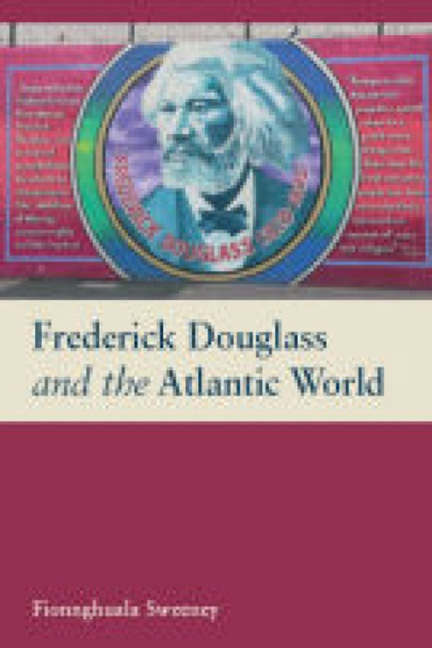Book contents
- Frontmatter
- Contents
- Introduction: Frederick Douglass and the Atlantic World
- 1 ‘The Republic of Letters’: Frederick Douglass, Ireland and the Irish Narratives
- 2 Friends and Allies: The Economics of the Text
- 3 An American Slave: Representing the Creole Self
- 4 The Hidden Ireland: Social Commentary and Public Witness
- 5 ‘Mask in Motion’: Dialect Spaces and Class Representation
- 6 Race, Civilization, Empire
- 7 Models of Progress: Ireland, Haiti and the Atlantic
- Conclusion
- Bibliography
- Index
Introduction: Frederick Douglass and the Atlantic World
- Frontmatter
- Contents
- Introduction: Frederick Douglass and the Atlantic World
- 1 ‘The Republic of Letters’: Frederick Douglass, Ireland and the Irish Narratives
- 2 Friends and Allies: The Economics of the Text
- 3 An American Slave: Representing the Creole Self
- 4 The Hidden Ireland: Social Commentary and Public Witness
- 5 ‘Mask in Motion’: Dialect Spaces and Class Representation
- 6 Race, Civilization, Empire
- 7 Models of Progress: Ireland, Haiti and the Atlantic
- Conclusion
- Bibliography
- Index
Summary
The Eagle Stirreth Her Nest', one of C.L. Franklin's best-known sermons, off ers a critique of the United States, a nation predicated as much on exploitation and oppression as on liberty and democracy. The eagle of the title is not only the central image of the sermon, but emblem of the American Republic, and metaphor of divine presence and protection. The piece begins as exegesis, listing, then expounding the characteristics shared by the eagle and the divine: strength, speed and vision. It subsequently slips into an apparently unrelated folk narrative of a captive eagle being raised on a poultry farm. His difference from the rest of the birds is soon evident, and the eagle is confined to a cage in order to prevent his escape. As the eagle ages, he begins to outgrow his cage, as he does all subsequent cages built for him, until finally, in pity, he is released by the farmer. The correspondence with the initial biblical tale becomes clear in a final analogy between the eagle's release and a Christian prophecy of freedom and resurrection:
My soul
Is an eagle
In the cage that the Lord
Has made for me. …
My soul
Is caged in,
In this old body,
Yes it is,
And one of these days
The man who made the cage
Will open the door
An let my soul
Go.
One of these days
My soul will take wings
My soul will take wings.
The eagle of the folk tale, of course, provides a metaphor for the captivity of the African American subject in the United States, a representation at odds with the eagle's official designation as divine protector and symbol of American democratic idealism. Confined, not merely by successive cages, as the story explains, but, less obviously perhaps, by the vernacular forms in which the story is inscribed, the captive eagle becomes symptom and symbol of its own failure as a trope of liberty and the ideals of the state. As such, the text, its performance, and the symbol itself are marked out as zones of contest, in which the meaning, stability and viability of icons of national identity come under scrutiny, and are ultimately found to be wanting.
- Type
- Chapter
- Information
- Frederick Douglass and the Atlantic World , pp. 1 - 12Publisher: Liverpool University PressPrint publication year: 2007



